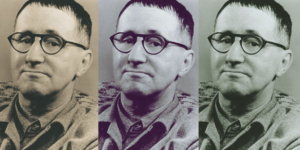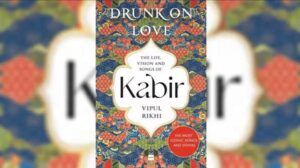Demystifying the Halo Around Naatu Naatu and RRR
The bagging of the coveted golden statuette by the musical score ‘Naatu Naatu’ at the Oscars Academy Awards ceremony, has quite predictably set our people dancing in ecstasy, and united both the ruling and the Opposition politicians in flaunting the award as a symbol of India’s superior status in the global cultural arena. As Anurag Thakur, the Information and Broadcasting Minister, announced in the Rajya Sabha on March 14: “Brand India has arrived.” Prime Minister Narendra Modi was one of the first to come out with a message congratulating the awardees: “Exceptional! The popularity of ‘Naatu Naatu’ is global. It will be a song that will be remembered for years to come. Congratulations to @mmkeeravan, @boselyricist and the entire team for this prestigious honour.”
The Congress president Mallikarjun Khage, speaking as the leader of the Opposition in the Rajya Sabha, hailed the award as a “great pride for us,” – adding a regional twist: “…two cinemas from southern India have won the award.”
Judging by the flood of similar accolades flowing from political leaders, film directors and actors, and other influential personalities, one never knows whether or not our national anthem may soon be replaced by ‘Naatu Naatu’!
Opening our eyes out of the blinkers of the Oscars Award
In the midst of all this hullabaloo around the award, let us spare a few moments to see what it is all about. We should locate the song ‘Naatu Naatu’ and the film RRR from which it is being extrapolated, in a wider context – which is both cultural, historical and political.
To start with the cultural context, the song ‘Naatu Naatu’ has been given the award under the category of ‘Best Original Song.’ But what is so original about the song? Old- timers like me remember the lilting melody of the song ‘Chico, chico, from Puerto Rico’ (composed by Edmundo Ras and his Rumba band in 1945), which we as youngsters heard it being rendered by crooners in Calcutta’s Park Street restaurants in the early 1960s. At around the same time, the tune of that song was adopted in Hindi by Lata Mangeshkar while singing ‘Gorey, gorey, O bankey chhorey…’ – a song that was to become a great hit in those days.
When I listen to ‘Naatu Naatu’ today, its rhythm seems to echo that of those old songs that I referred to above. I request the present generation of fans of ‘Naatu Naatu’ to spare some time to rewind in You-tube to listen to ‘Chico, chico…’ and ‘Gorey, gorey…’ I am not accusing the composers of the ‘Naatu Naatu’ tune of plagiarizing. But may be, at a sub-conscious level, tunes of past songs linger in the memory of today’s lyricists that can often influence their present compositions.
The ‘Naatu Naatu’ dance sequence
In the film RRR, ‘Naatu Naatu’ is sung to the accompaniment of a performance of two dancers, N.T. Rama Rao junior and Ram Charan. It is this ‘jugal-bondhi’ of the audio recording of the song played in the background and the visual foot stepping of the pair of actors to that tune on the screen, that earned the song the Oscars award. In other words, one wonders whether the song alone on its own merits could have won the award without the visual support of the two dancers, whom the judges watched on the screen.
To come back to the composition of the ‘Naatu Naatu’ song and the dance performance accompanying it, it is being claimed that they are based on Telugu folk style. Chandrabose who composed the lyric ‘Naatu Naatu’ said: “The song is a celebration of ethnicity and culture…The lyrics which I have penned for the song are my experiences in my village.” (Re: Deccan Chronicle. March 14, 2023) .
Yet, we get to listen to this song only when watching the film RRR – a commercial blockbuster. Curiously enough, this song is not sung by the villagers with whom Chandrabose shared his experiences. In the film, his song is being sung by a pair of male performers dancing in a Hollywood-Bollywood hybrid style. The two dancers – N.T. Rama Rao Junior and Ram Charan are clad in shirts and trousers – and are dancing according to a style which had been known for years as ‘tap dancing’ in Hollywood films. In this style of dancing, the performers wear shoes with pieces of metal on the bottom which make sharp sounds that can be used by the dancers to tap on the floors to suit the music. In RRR, the two dancers can be seen wearing similar shoes which they flaunt when swinging their legs. This dance sequence is a far cry from the rural folk culture that Chandrabose claims to have sourced. As far as we know, in the villages folk artistes dance bare foot to the beats of drums and sounds of flutes.
The dance performance in RRR, by the two acclaimed actors, is a poor replica of the ‘tap dance’ model that was popularized by the famous actor Fred Astaire in Hollywood in the early 1940s. The present fans of RRR, in their You-tube can rewind to films like ‘Royal Wedding,’ ‘The Shorty George,’ made in the 1940s where Fred Astaire danced tapping his feet in those shoes to the lilting background music. They can compare and make their own judgment.
Historical context of the RRR storyline and its political connotations today
I have no objection to our film makers adapting a foreign musical score or dancing style for use in their films. They are free to choose. There have been several successful examples of such adaptation in the Indian film world. Take for instance the genre of cabaret. I still fondly remember Helen’s cabaret dance (in the film ‘Howrah Bridge’?), singing that funny song: ‘Meri naam Chin-chin-choo…Hello Mister, how do you do?’
But in the present case, the question is whether the choice of the musical track and the dancing style for this particular film, was appropriate for the past historical events that it purports to cover.
The storyline of the film is based, according to the film maker, on the lives of two Telugu revolutionaries of early-20th century. The first is Alluri Sitaram Raju who led the Rampa rebellion in the Vishakapatnam Agency hills against the British from 1920 till 1924, when he was killed by the British police. The second is – Komaram Bhim, a Gond tribal leader who fought against both the Nizam rulers and British police who killed him in 1940. The heroic deeds of these two anti-colonial and anti-feudal peasant rebels are still commemorated by the Telugu people, as well as activists of peasant movements in other parts of India who regard them as icons.
The film makers of RRR have turned this history of their rebellion into a fictitious story, where these two rural revolutionaries are refashioned as an urban pair of friends fighting the colonial rulers. They are made to engage into a lot of acrobatics, ranging from jumping out of horses and driving scooters to knee-jerking to dancing tunes – all in the name of fighting the British. The ‘Naatu Naatu’ dance sequence is a phase in this reconstructed narrative of their rebellion, where they mock at their rulers in a gathering of British socialite.
At the end of the film, the two protagonists, the urban versions of Komaram Bhim and Alluri Sitaram Raju, are metamorphosed into Hindu mythological figures – Ram and Bhim. The climax shows an Alluri Sitaram Raju in the form of Ram, shooting his arrow and killing a gun-wielding British soldier – suggesting the superiority of Hindu mythological weapons over the gun power of the West? It sounds like an echo of the loud claims made by the protagonists of the ruling ideology of Hindutva that all its traditional norms and practices should be respected as superior to those invented by the West. Is RRR sending us that message?
This Hindutva edge to the end of RRR cannot be completely ruled out, if we remember that the story of the film has been written by V. Vijayendra Prasad, a celebrated Telugu writer, who is at present a BJP member of the Rajya Sabha, and who also happens to be the father of the film’s director S. S. Rajamouli. After meeting Prime Minister Narendra Modi on the eve of the Oscars Award, Vijayendra Prasad was reported to have said about Modi: “I am blown with his vision!” (Interview with CNN News 18).
RRR as an insult to Alluri Sitaram Raju and Komaram Bhim and their legacy
By distorting the images of the two revolutionaries through portraying them merely as swashbuckling adventurers and entertaining dancers, Rajamouli has insulted their memory. He has totally ignored their historically political role as anti-feudal and anti-colonial leaders in our freedom struggle. Further, by mythologizing and appropriating them as Hindu heroes at the end of the film, Rajamouli has trampled upon the (non-Hindu) Adivasi roots which gave rise to the emergence of these two heroes. I wonder how the Adivasi audience today will view the film.
Adding injury to that insult (if I am allowed to reverse the words), the actress Deepika Padukone while introducing RRR’s ‘Naatu Naatu’ at the Oscars Awards ceremony laughed saying: “In addition to …illustrating the film’s anti-colonial theme, it’s also a total banger” – the term meaning a song and dance box office hit in the market. Is that how you pay tribute to the two martyrs?
At the end of it all, we are left with a film which has become a blockbuster – at the expense of the martyrdom of two revolutionaries, who are caricatured as dancers gyrating wildly to the beat of ‘Naatu Naatu’!
(Sumanta Banerjee is a political commentator and writer. Courtesy: Countercurrents.org.)




